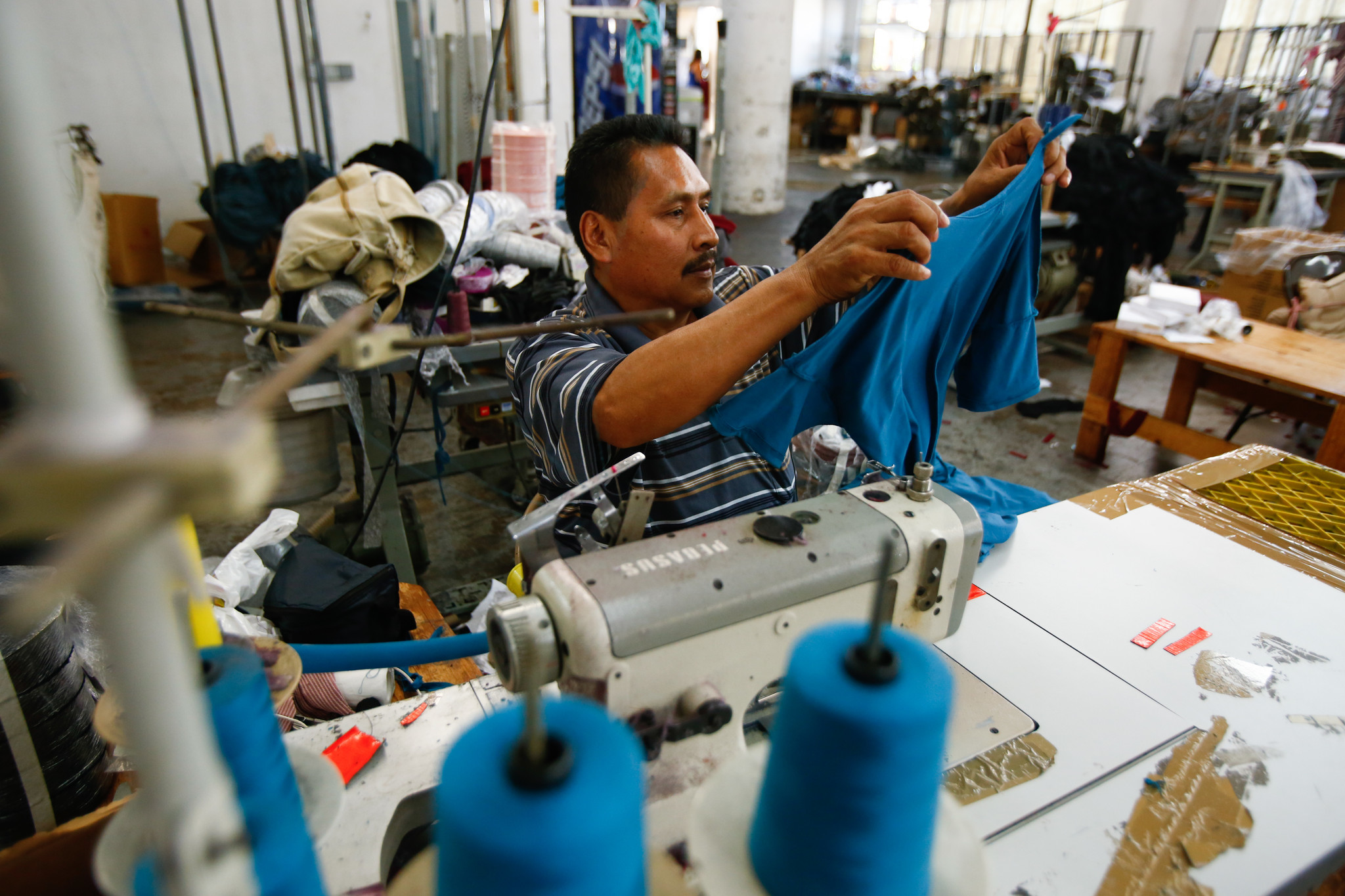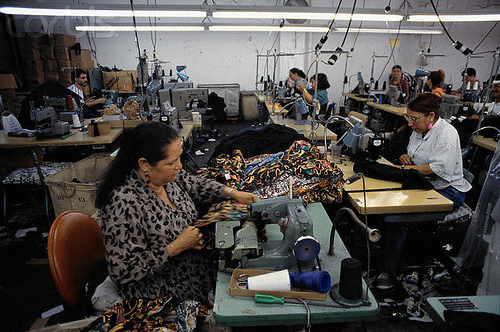To many consumers, the idea of sweatshops is a foreign thought that belongs in foreign countries. We can all visualize a distressing scene of a women bent over a sewing machine working a 16-hour shift, in a crammed workspace in Southeast Asia, for a salary of mere pennies. However, with the recent rise in popularity of the “fast fashion” trend, there has been a huge resurgence of domestic textile productions in developed countries. Sonia Sodha’s article sheds light to an unknown truth that is hidden in some of the world’s most progressive nations.
Many popular high-street brands are currently having a hard time keeping up with their large demands while minimizing their turnaround periods, and have begun looking inward to domestic “sweatshops” to supply their never-ending need for fast, new fashion trends. These sweatshop-style factories operate in well-populated, urban cities – like Leicester, England – and cut costs by exploiting the wage system to get around paying their workers in full.

I, however, have to respectfully disagree with Sonia’s opinion that the main driving force behind these domestic sweatshops is from a weak state governance and an enfeebled union. I rather believe that it is the large retailer corporations that should be held responsible. Clothing brands like Forever 21, Asos, and T.J.Maxx – who rely on producing cheap clothes that sell in large volumes – are constantly pressuring their manufacturers to cut costs in order to maximize their own profit.
“They force the production costs to as low as they want because of their power in the supply chain, with the result of ultimately the workers bearing the whole cost and risk of the system.” – David Weil, former head of the Labor Department’s Wage and Hour Division
Though no matter how tightly retailers squeeze their margins or how frequently the state penalizes them for unpaid wages, many manufacturers are unable to turn down a buyer with the quota and scale of a store like T.J.Maxx.
Manufacturers are therefore left no choice but to cut whatever costs possible to meet the near unattainable demands from big retailers. With manufacturers spending less than $4 on the production of a garment that a company like Forever 21 would purchase and sell at $9 and then $25 respectively, there isn’t much left at the end of the day for the factory workers. Manufacturers are thus forced to illegally exploit immigrants and illegal refugees who are unable to say no to a paying job, no matter how little that pay really is.

The only party who seems reasonably unaffected from this vicious production cycle are big retailers who generally claim that they are only the distributer of clothes and are therefore not liable for any wage claims by workers, even if said worker has stitched their company’s label onto a garment.
In the end, the result is a situation we see all too often. Corporations 1, the people 0.
Word Count:438
